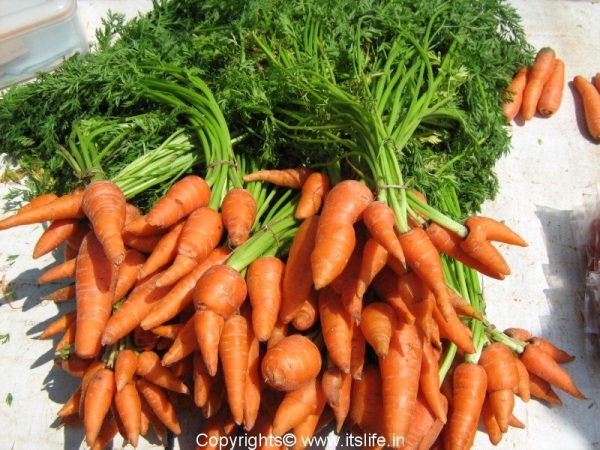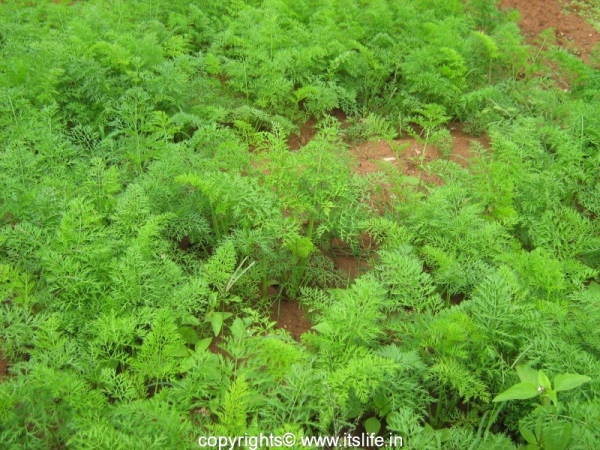Carrot Kosambari is a favorite and a very common traditional salad in Mysore so is Carrot Halwa in North India. While teething, babies are given a piece of peeled Carrot to gnaw so as to comfort the irritating gums. And kids would have been coaxed by elders to eat Carrot saying that Carrots are good for eyes. This powerful root vegetable, goes well with all vegetables and is extensively used in Indian and other cuisines worldwide.
Botanical name is Daucus carota subsp. Sativus and belongs to Apiaceae family. Carrots are related to Parsnips, Fennel, Parsley, Anise, Caraway, Cumin and Dill. It is native to Europe, Iran, and Afghanistan and now grown around the globe as a cash crop.
Carrot is a biennial plant and grows up to 1 meter tall. The leaves are delicate and look like fern. The flowers are white and are 3 to 7 cm wide.
Presence of β-Carotene or Beta Carotene is the reason for the Orange color of Carrots. β-carotene is absorbed as Vitamin A in Humans. Carrots are also rich in antioxidants and minerals.
Benefits of Carrots are as follows:
- Improved Vision
- Cancer Prevention
- Anti-Aging
- Healthy Glowing Skin (from the inside)
- A Powerful Antiseptic
- Beautiful Skin (from the outside)
- Prevent Heart Disease
- Cleanse the Body
- Healthy Teeth and Gums
- Prevent Stroke
- Helps in Digestion
- Gets rid of intestinal parasites
- Relieves constipation
Carrots come in a wide variety of shapes, colors and sizes. They are available in Purple, Yellow and Red. A pink-red variety is grown in North India. Carrot can be consumed either raw or cooked.
Recipes using Carrots:
- Carrot Ginger Soup
- Carrot and Chives
- Palya
- Cabbage – Carrot Palya
- Kosambari
- Gajar Ka Halwa
- Paratha
- Carrot and Coconut Burfi
- Payasa
- Raitha
- Carrot Cake
- Churmuri
- Bisibelebhath
- Sihi Kootu
- Vegetable au Gratin
- Shavige Pulao
- Vegetable Fried Rice
- Carrot Cucumber Clear Soup
- Pav Bhaji
- Sagu
- Kurma
- Masala Vegetable Noodles
- Kharabhath
- Vegetable Khichdi
- Avial
- Ishtew
- Tri Color Palya
- Steamed Vegetables tossed in herbs
- King of Vegetables
- Shukto
- Vegetable Stock
- Vegetable Jhalfrazie
- South Indian Vegetable Pulao
Carrot is propagated using seeds and is grown widely in Ooty region using the terrace farming methodology.
Holtville in California is known as the Carrot Capital of the World, and holds an annual Carrot festival.




